- Home
- Неизвестный
The Cradle King: The Life of James VI and I, the First Monarch of a United Great Britain
The Cradle King: The Life of James VI and I, the First Monarch of a United Great Britain Read online
The author and publisher have provided this e-book to you for your personal use only. You may not make this e-book publicly available in any way. Copyright infringement is against the law. If you believe the copy of this e-book you are reading infringes on the author’s copyright, please notify the publisher at: us.macmillanusa.com/piracy.
Contents
TITLE PAGE
COPYRIGHT NOTICE
ACKNOWLEDGEMENTS
PROLOGUE
1. Nourished in Fear
2. The Making of A King
3. A Cradle King
4. The Phoenix
5. A True Son of His Mother
6. Sole King
7. The New Rib
8. Bewitched
9. Advice to A Son
10. A Wild Unruly Colt
11. Betwixt Both
12. Reformation and Combustion
13. Two Twins Bred in One Belly
14. A Terrible Blow
15. Strange Pageantries
16. Infinite Privacy
17. A Salmonlike Instinct
18. The Peacemaker
19. Of Jack, and Tom
20. Solomon Slept
NOTES
BIBLIOGRAPHY
INDEX
BY THE SAME AUTHOR
COPYRIGHT
Acknowledgements
Work on this book started at the Folger Shakespeare Library in Washington DC and finished at the British Library in London, and I am indebted to the librarians and staff of both these great institutions. I am immensely grateful to the Folger for giving me a Short-Term Fellowship in 2000, and to Tom Healy and my colleagues at Birkbeck for allowing me generous research leave. Maggie Pearlstine and John Oates at Maggie Pearlstine Associates encouraged me throughout. At Chatto & Windus, Rebecca Carter was a supportive and challenging editor.
I could not have written The Cradle King without the insights of those scholars who have broadened and deepened our knowledge of all things Jacobean since D.H. Willson’s 1956 biography of James. I learned particularly from the work of (in alphabetical order) G.P.V. Akrigg, Leeds Barroll, David Bergeron, Caroline Bingham, Antonia Fraser, Jonathan Goldberg, Maurice Lee Jr., Roger Lockyer, Maureen Meikle, Stephen Orgel, Curtis Perry, David Stevenson, Roy Strong and Jenny Wormald. For ideas, suggestions, comments and help of many kinds, I am grateful to Tom Betteridge, Warren Boutcher, Tricia Bracher, Jerry Brotton, Stephen Clucas, Erica Fudge, Donna Hamilton, James Knowles, Gordon McMullan, Steven May, David Norbrook, Alex Samson, James Shapiro, Bruce Smith, Sue Wiseman, Heather Wolfe and Elizabeth Wood.
Finally, my sincere thanks go to the friends who saw me through: Patricia Brewerton, James Daybell, Will Fisher, Eliane Glaser, Andrew Gordon, Lisa Jardine, Simon Lloyd-Owen, Lloyd Meiklejohn, Kirk Melnikoff, Chris Ross, Richard Schoch, Goran Stanivukovic, Garrett Sullivan and especially Tyler Smith.
Prologue
IN 1603, JAMES I, King of England, made a visit to one of the most southerly of his new possessions, Beaulieu, in the New Forest. All the local nobility and gentry turned out to get their first glimpse of the King of Scots who had just become their own sovereign. Among them was the eighteen-year-old John Oglander, a son of the local landed gentry. Over fifty years later, Oglander jotted down his memories of that royal visit.1 By then, his life was consumed by the fight to save James’s son, the embattled King Charles. But his image of James was far from complimentary. ‘King James I of England was the most cowardly man that ever I knew,’ he started. When James came to Beaulieu, he recalled, ‘he was much taken with seeing the little boys skirmish, whom he loved to see better and more willingly than men.’ The pantomime of juvenile combat suited the King far better than the real, very bloody thing. ‘He could not endure a soldier or to see men drilled, to hear of war was death to him, and how he tormented himself with fear of some sudden mischief may be proved by his great quilted doublets, pistol-proof, was also his strange eyeing of strangers with a continual fearful observation.’
Why would Oglander, a staunch royalist, write such a thing? His other notes on the King were positive enough. ‘Otherwise’, he wrote, James was ‘the best scholar and wisest prince for general knowledge that ever England had, very merciful and passionate, liberal and honest.’ He was ‘a great politician and very sound in the reformed religion’. He ‘spoke much and as well as any man, or rather better.’ And he was ‘the chastest prince for women that ever was, for he would often swear that he had never known any other woman than his wife.’ Although he was known to be ‘excessively taken with hunting’ – indeed, he was notorious for it – ‘he did not, or could not’, according to Oglander, use much ‘bodily action’, so that ‘his body for want of use’ grew ‘defective’. In Oglander’s eyes, this was a King for whom theory and rhetoric were never matched by practice. ‘If he had but the power, spirit and resolution to have acted that which he spoke, or done as well as he knew how to do, Solomon had been short of him.’
For Oglander, the answer to this paradox lay in the King’s ‘fearful nature’. Throughout his life, James was noted, and lampooned, for his fear of war, weapons, loud noises and unexplained strangers. He referred to them, in his usual grandiose style, as his ‘daily tempests of innumerable dangers’. Speaking to the English Parliament after he survived perhaps the greatest threat of all, the Gunpowder Plot of November 1605, he made his own diagnosis as to the cause of his ‘fearful nature’. They could be traced and dated, he told the Parliament, ‘not only ever since my birth, but even as I may justly say, before my birth: and while I was in my mother’s belly’.2
CHAPTER ONE
Nourished in Fear
SCOTLAND LOOKED FORWARD to a great marriage. Mary, although a widow, was still a young, captivating Queen, only twenty-three years old, a tall, auburn-haired woman. She came from ruling the sophisticated French court as the wife of King François II, and preferred to speak, read and write in French. The groom, Henry Stuart, Lord Darnley, by all accounts was an equally fine-looking man, taller than his bride, blond and elegant, and just nineteen. The French ambassador reported that ‘it is not possible to see a more beautiful Prince, and he is accomplished in all courtly exercises’.1 On Sunday 29 July 1565, very early in the morning, they were married in the Chapel Royal in the Palace of Holyroodhouse in Edinburgh.2
But the ceremony almost didn’t happen. As one observer noted, less than a month before the wedding, Henry did not think himself sufficiently honoured by the prenuptial arrangements Mary proposed. He wanted to reign alongside her as King, to have the ‘Crown Matrimonial’; Mary insisted that he should wait until he came of age and had gained the consent of Parliament. But Henry’s ‘insolent temper’ prevailed,3 and on the day after the wedding, Henry got his wish. At Edinburgh’s Mercat Cross Henry was formally proclaimed as King of Scots, and the official document dated the event as being ‘of our reigns the first and twenty-third years’, the ordering of the numbers giving Henry’s reign priority over Mary’s. But a proclamation could not change men’s opinions. As ‘King Henry’ was proclaimed, the nobility maintained silence, refusing to cheer their new sovereign. Only his father, the Earl of Lennox, chimed in with the usual ‘God save his Grace!’4 It’s a mark of how little accepted Henry was as King that to this day historians routinely refer to him as ‘Lord Darnley’.
The new King Henry was competing with a wife who had been Queen of Scots for twenty-three years, since she was a week old. The only legitimate child left by James V at his early death in 1542, Mary had spent only
the first six years of her life in Scotland, under a regency government headed by James Hamilton, second Earl of Arran. Through the intervention of her French mother, Marie de Guise, Mary had left for France in 1548 to receive an education: ten years later she married the heir to the French throne. In 1554, Arran stepped aside to allow Marie de Guise to take over as Regent, and Marie did her utmost to strengthen the bond between Scotland and France popularly known as ‘the auld alliance’.
But Marie’s control on the country was never total. Scotland in the 1550s was witnessing the rise of a new religious movement. Protestants, inspired by the ecclesiastical reformations in Germany and England, began to form themselves into a new Church. They were encouraged by the visit of the Calvinist preacher John Knox, who returned to his homeland in 1555 and preached and celebrated communion across the country. When the Scots Parliament met in December 1557 to approve the marriage of their absentee Queen Mary with the French Dauphin François, the Protestant Lords took the opportunity to draw up a formal ‘band’, or alliance, pledging to further the Reformist cause in Scotland against the regime of the Regent Marie. Two years later, the same Protestant Lords, known as the Lords of the Congregation, succeeded in persuading Knox to return to Scotland permanently. By now they were beginning to wage war against the Regent and her French-maintained army. Gradually, the Lords of the Congregation, headed by James V’s illegitimate son Lord James Stewart, pushed the Regent’s forces back to Edinburgh’s port town, Leith, which they fortified in preparation for battle. English forces were sent by Queen Elizabeth to support the Protestant Lords, but the looming war never materialised. In June 1560 Marie de Guise died, and the impetus of her campaign was lost. On 6 July of that year, a peace was declared at Edinburgh, whereby both the French and the English were to leave Scotland; the English used their involvement to broker an agreement that Mary and François would give up their claims to the English throne. Mary’s half-brother Lord James Stewart took control of the country, and imposed a new Reformation on Scotland, adopting a ‘Confession of Faith’ which founded a new Kirk (Church), broadly Calvinist in spirit, outlawing the saying of the Mass and rejecting the authority of the Pope.5
1560 also saw the death of Mary’s husband King François from an abscess in his ear. As his brother Charles ascended the throne, Mary had no reason to remain in France and was forced back to Scotland. It was not a journey she wished to make. She had been brought up to believe that Scotland was a backward, ignorant, unsophisticated land. At the self-consciously civilised French court, Scotland’s social conventions – fierce loyalties to local magnates, peace kept through strong ‘bonds’ and justice meted out in feuds – were decried as outdatedly feudal at best, barbaric at worst. On reaching Scotland, Mary’s policy of government seems to have been to close her eyes and hope her troubles would melt away. Radical differences were ineptly smoothed over rather than forced into resolution. So while Mary steadfastly refused to ratify the Acts of Parliament that installed the new Confession of Faith, the split from the papacy and the forbidding of Mass, she manoeuvred strategically, deciding not to interfere with the new religious polity as long as she was allowed to worship freely in the Roman faith. She signed through a deal by which the new Kirk would receive one sixth of the wealth of the old Church. She crushed one of the leading Roman Catholic noblemen, the Earl of Huntly. And she took as her chief counsellor her half-brother Lord James Stewart, leader of the Lords of the Congregation, whom she created Earl of Moray in February 1562; it was through Moray and her Secretary of State, William Maitland of Lethington, that she ruled the country.
This compromise state of affairs was horribly precarious, and Mary’s plans for marriage would ultimately blow it down. After negotiations to marry Elizabeth of England’s dashing young favourite Robert Dudley foundered, Mary’s eyes turned to the young Henry Stuart, Lord Darnley. It seemed a popular choice. Henry was a Scot, son of Matthew Stuart, Earl of Lennox, whom Mary had recalled from exile the previous year. For Mary, Henry’s personal charms were matched by his strategic importance in her political future, for the Lennoxes had a strong claim to the English throne. But Henry was suspected of being a Catholic; in April 1565, Moray left the court in protest, and a month later refused to give Mary a written promise that he would support the marriage, saying that he feared that Henry would not be ‘a favourer or setter forth of Christ’s true religion’; in reply, Mary gave him ‘many sore words’.6 Soon Moray entered into a ‘band’ of mutual support with the ex-Regent Arran, head of the Hamiltons and the heir apparent to the throne if Mary failed to produce a child. At Moray’s suggestion, Arran declined a summons to court: Mary promptly proclaimed him a traitor, and only spared his life because he agreed to a five-year banishment.7
Despite the protests, Mary was adamant on her choice, and on 29 July 1565 she made her second marriage. Now Henry was to feel the hatred Mary aroused. On Sunday 19 August, the King attended a sermon by John Knox at Edinburgh’s St Giles’ Church that lasted ‘an hour and more longer than the time appointed’. Knox did not subscribe to the policy of mutual appeasement between Kirk and Queen. Mary, he thought, should either convert or die. Added to his distaste for the Queen was his firmly held and oft expressed belief that a woman should not rule, the subject of his notorious The First Blast of the Trumpet against the Monstrous Regiment of Women. He had even turned down Mary’s offer to seek his private counsel. ‘If your Grace please to frequent the public sermons,’ he retorted, ‘then doubt I not that ye shall fully understand both what I like and dislike, as well in your Majesty as in all others.’8 By now Knox was a shrunken old man who had to be helped into the pulpit by two men, and who started his sermon leaning; but by the time he was done with his sermon, wrote one admiring onlooker, ‘he was so active and vigorous that he was like to ding that pulpit in blads [seemed likely to beat the pulpit to pieces] and fly out of it!’9 Knox’s text on this occasion was Isaiah 26: 13–21: ‘O Lord our God, other lords than thou have ruled over us.’ In it, Knox focused on how wicked princes were sent by God because of the sins of the people, to act as tyrants and scourges to plague them, and more particularly ‘that God sets in that room – for the offences and ingratitude of the people – boys and women’. Henry and Mary were tacitly likened to Ahab and Jezebel, with Knox pointing out ‘that God justly punished Ahab and his posterity, because he would not take order with that harlot Jezebel’. Moving on, Knox compared Henry to Julian the Apostate, and concluded with a prayer that ‘we may see … what punishment he [God] hath appointed for the cruel tyrants’. Unsurprisingly, the King was ‘so moved at this sermon, that he would not dine; and being troubled with great fury he passed in the afternoon to the hawking’, an inappropriate Sabbath activity guaranteed to confirm Knox in his low opinion of the King. The Council ordered Knox to abstain from preaching for ‘a season’, because ‘the King’s majesty was offended’.10
But John Knox was not the newlyweds’ only problem. Mary was no sooner married than she found herself once more under attack from Moray, who launched a rebellion citing Mary’s ‘danger’ to the Protestant religion, supported by the Earl of Argyll, who wielded considerable influence in the west of the country. Failing to answer a summons to appear before Mary, Moray was ritually ‘put to the horn’, or outlawed, on 6 August 1565, and eight days later his properties were seized.11 As Moray gathered his forces at Ayr, Mary mustered her troops, and from late August to the beginning of October the rebel and the royal forces (the latter led by the King’s father Lennox and Mary’s Lord Chancellor James Douglas, fourth Earl of Morton, with Henry and Mary in the rearguard) engaged in a tiresome standoff in often appalling weather during which the rival troops never met, a non-event aptly dubbed ‘the Chaseabout Raid’. Mary, carrying a pistol, and wearing a steel cap, was remarked upon for her fortitude: while ‘the most part waxed weary’ in the tempestuous weather, ‘yet the Queen’s courage increased manlike so much that she was ever with the foremost’.12 After rebel forces were expelled from Edinburgh on 1
September, the royal forces gained the upper hand and forced the rebels south. By 6 October, defeat was inevitable, and Moray fled over the border to seek asylum in England.
Despite her vigour during the Chaseabout Raid, Mary’s health was fragile, and it was often reported that the Queen was ill. In November 1565, for example, she took to her bed complaining of a pain in her side, but newsmongers were keen for the newlywed’s condition to be something more romantic than her ‘old malady’. As the winter drew on, word spread that the Queen was expecting her first child, a report only fanned by her decision to ride in a litter, rather than on horseback as usual, from Edinburgh to Linlithgow in December.13 While an early pregnancy boded well for the marriage, frequent quarrels suggested that all was not well between the King and Queen. In September, Mary had welcomed back from exile a Protestant nobleman, James Hepburn, the fourth Earl of Bothwell, earlier banished on charges of planning to abduct her. Bothwell, the hereditary Lord High Admiral of Scotland, wielded considerable power in the Borders. Contemporary opinion was remarkably consistent on the Earl: he was, according to the English agent in Scotland Thomas Randolph, ‘a blasphemer and irreverent speaker both of his own sovereign and the Queen my mistress’; another English observer, the ambassador Nicholas Throckmorton, saw him as a ‘[vain]glorious, rash and hazardous young man’.14 In the words of Sir John Maxwell, fourth Lord Herries, a loyal supporter of Mary, Bothwell was ‘a man high in his own conceit, proud, vicious, and vainglorious above measure; one who would attempt anything out of ambition’.15
Mary, knowing that Bothwell nurtured a longstanding enmity towards Moray, wanted him to lead her forces; Henry wanted his father to have the position, but Mary prevailed; she soon came to rely increasingly on Bothwell in military matters.16 There were other signals of marital tension. In December, a coin reading ‘Henricus et Maria’ was recalled from circulation, and reissued with the inscription ‘Maria et Henricus’.17 By the end of the year, the change of priority was clear: Randolph reported that ‘a while [ago] there was nothing but “King and Queen, his majesty and hers”; but now the “Queen’s husband” is more common’.18 Mary was also upsetting many Scottish lords who saw their traditional influence waning, while that of the Queen’s personal entourage, which included several foreign servants who had followed her from France, waxed remarkably. They complained that ‘the Queen had now a certain resolution to tyrannise over the country; for what could be more grievous than to mistrust her own subjects, and commit her person to the guard of Italians, strangers, and papists!’ Look at her secretary David Riccio, ‘Signor Davy’, ‘one whom the Queen gave greater trust unto than her own husband, one without whose counsel the Queen did nothing. He was an Italian himself, and would make these Italians do what he pleased!’19 David Riccio had come to the Scottish court in 1561 in the retinue of the ambassador of the Duke of Savoy, and had entered the Queen’s Household as a singer, before becoming her personal secretary. This post, one of great intimacy with the Queen, was one to set tongues wagging. When Henry withdrew from court to spend time hunting in Peebles, the Queen’s party blamed it on his ‘wilfulness’ and anger at the curbing of his power and deferring of his coronation. Others, however, claimed that Mary had forced him to retire, openly expressing her distaste for his company. At the same time, according to Lord Herries, ‘she raised every day Signor Davy higher in her favour, and used him with greater familiarity than was fit. It was openly said that she took more pleasure in his company than in the King’s, her husband’s; that she made him sit at table with her, and [he] had free access to her bedchamber, at all hours.’ Her friends protected Mary by saying that Riccio was ‘witty and faithful’ but that ‘it was nothing likely that she would fancy his person’ since he was ‘neither handsome nor well-faced’.20 (Mary’s apologist Adam Blackwood confirms that ‘He was a man of no beauty or outward shape, for he was misshapen, evil favoured, and in visage very black; but for his fidelity, wisdom, prudence, virtue and his other good parts and qualities of mind he was richly adorned.’)21 Henry’s father Lennox, on the other hand, was certain that Mary was ‘using the said David more as a lover than a servant. Forsaking her husband’s bed and board very often, liking the company of David, as appeared, better than her husband’s.’22 Whatever the truth of the rumours, Lord Herries concluded, ‘they were by her enemies cried out with open mouth, to defame her and incense her husband’.23

 The Bolivian Diary
The Bolivian Diary Caffeine Blues_ Wake Up to the Hidden Dangers of America's #1 Drug ( PDFDrive )
Caffeine Blues_ Wake Up to the Hidden Dangers of America's #1 Drug ( PDFDrive )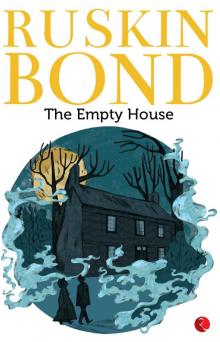 The Empty House
The Empty House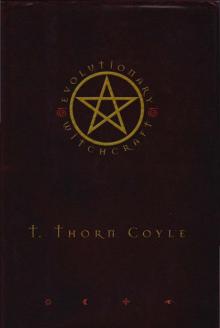 T Thorn Coyle Evolutionary Witchcraft (pdf)
T Thorn Coyle Evolutionary Witchcraft (pdf)![K J Emrick & Kathryn De Winter - [Moonlight Bay Psychic Mystery 01-06] - A Friend in; on the Rocks; Feature Presentation; Manor of; by Chocolate Cake; A-Maze-Ing Death (retail) (epub) Read online](http://freenovelread.comhttps://picture.efrem.net/img/nienyi/k_j_emrick_and_kathryn_de_winter_-_moonlight_bay_psychic_of_by_chocolate_cake_a-maze-ing_death_retail_epub_preview.jpg) K J Emrick & Kathryn De Winter - [Moonlight Bay Psychic Mystery 01-06] - A Friend in; on the Rocks; Feature Presentation; Manor of; by Chocolate Cake; A-Maze-Ing Death (retail) (epub)
K J Emrick & Kathryn De Winter - [Moonlight Bay Psychic Mystery 01-06] - A Friend in; on the Rocks; Feature Presentation; Manor of; by Chocolate Cake; A-Maze-Ing Death (retail) (epub) Next Day of the Condor
Next Day of the Condor Onyx
Onyx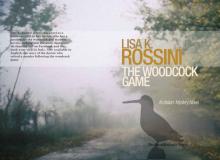 The Woodcock Game: An Italian Mystery Novel
The Woodcock Game: An Italian Mystery Novel Granta 122: Betrayal (Granta: The Magazine of New Writing)
Granta 122: Betrayal (Granta: The Magazine of New Writing)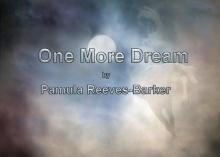 One More Dream
One More Dream Cosa Nostra by Emma Nichols) 16656409 (z-lib.org) (1)-compressed
Cosa Nostra by Emma Nichols) 16656409 (z-lib.org) (1)-compressed Cowboy by J. M. Snyder
Cowboy by J. M. Snyder Colossus
Colossus Star Trek - DS9 011 - Devil In The Sky
Star Trek - DS9 011 - Devil In The Sky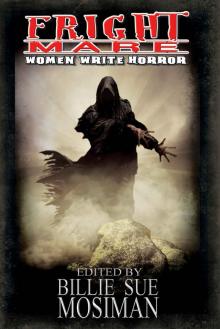 Fright Mare-Women Write Horror
Fright Mare-Women Write Horror The Future Is Japanese
The Future Is Japanese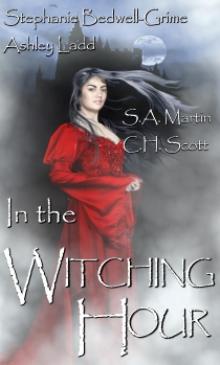 In the Witching Hour
In the Witching Hour Mammoth Books presents Wang's Carpets
Mammoth Books presents Wang's Carpets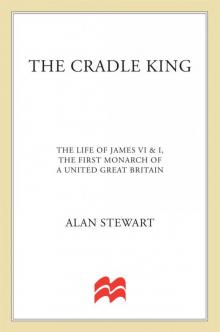 The Cradle King: The Life of James VI and I, the First Monarch of a United Great Britain
The Cradle King: The Life of James VI and I, the First Monarch of a United Great Britain Stalking Moon
Stalking Moon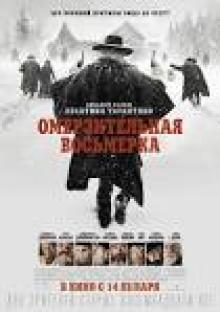 Hostage To The Devil
Hostage To The Devil![Harris, Daisy - Mere Passion [Ocean Shifters 2] (Siren Publishing Classic) Read online](http://i1.bookreadfree.com/i/03/23/harris_daisy_-_mere_passion_ocean_shifters_2_siren_publishing_classic_preview.jpg) Harris, Daisy - Mere Passion [Ocean Shifters 2] (Siren Publishing Classic)
Harris, Daisy - Mere Passion [Ocean Shifters 2] (Siren Publishing Classic) Day, Sunny - Hot in Space (Siren Publishing Ménage and More)
Day, Sunny - Hot in Space (Siren Publishing Ménage and More) Five Books Of The Lives, Heroic Deeds And Sayings Of Gargantua And His Son Pantagruel
Five Books Of The Lives, Heroic Deeds And Sayings Of Gargantua And His Son Pantagruel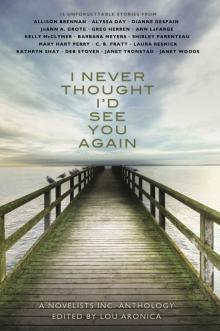 I Never Thought I'd See You Again: A Novelists Inc. Anthology
I Never Thought I'd See You Again: A Novelists Inc. Anthology Billion dollar baby bargain.txt
Billion dollar baby bargain.txt![Chenery, Marisa - Turquoise Eye of Horus [Egyptian Shifters 1] (Siren Publishing Classic) Read online](http://i1.bookreadfree.com/i1/03/26/chenery_marisa_-_turquoise_eye_of_horus_egyptian_shifters_1_siren_publishing_classic_preview.jpg) Chenery, Marisa - Turquoise Eye of Horus [Egyptian Shifters 1] (Siren Publishing Classic)
Chenery, Marisa - Turquoise Eye of Horus [Egyptian Shifters 1] (Siren Publishing Classic) Cat Magic
Cat Magic Star Trek - DS9 - Warped
Star Trek - DS9 - Warped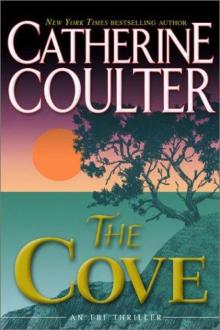 Catherine Coulter - FBI 1 The Cove
Catherine Coulter - FBI 1 The Cove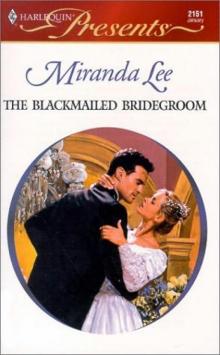 Miranda Lee -The Blackmailed Bridegroom
Miranda Lee -The Blackmailed Bridegroom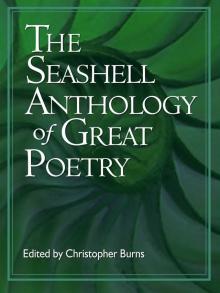 The Seashell Anthology of Great Poetry
The Seashell Anthology of Great Poetry Dragon Moon
Dragon Moon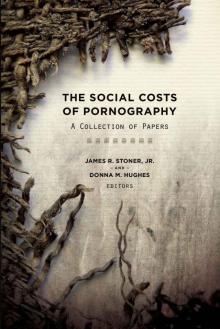 The Social Costs of Pornography: A Collection of Papers
The Social Costs of Pornography: A Collection of Papers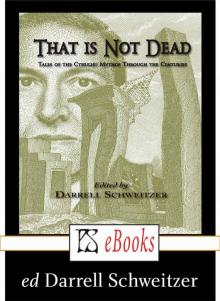 That Is Not Dead
That Is Not Dead Best New Horror: Volume 25 (Mammoth Book of Best New Horror)
Best New Horror: Volume 25 (Mammoth Book of Best New Horror) This Christmas by J. M. Snyder
This Christmas by J. M. Snyder Faerie Cake Dead
Faerie Cake Dead CS-Dante's Twins
CS-Dante's Twins EFD1: Starship Goodwords (EFD Anthology Series from Carrick Publishing)
EFD1: Starship Goodwords (EFD Anthology Series from Carrick Publishing) Echo Burning by Lee Child
Echo Burning by Lee Child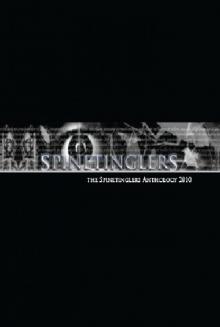 The Spinetinglers Anthology 2010
The Spinetinglers Anthology 2010 Wild Hearts
Wild Hearts Violet Winspear - Sinner ...
Violet Winspear - Sinner ...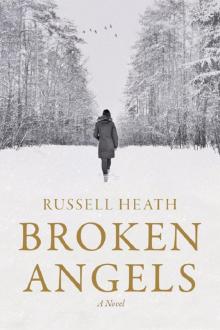 Broken Angels
Broken Angels FearNoEvil
FearNoEvil![Santiago, Lara - Range War Bride [Tasty Treats 11] (Siren Publishing PolyAmour) Read online](http://i1.bookreadfree.com/i1/03/30/santiago_lara_-_range_war_bride_tasty_treats_11_siren_publishing_polyamour_preview.jpg) Santiago, Lara - Range War Bride [Tasty Treats 11] (Siren Publishing PolyAmour)
Santiago, Lara - Range War Bride [Tasty Treats 11] (Siren Publishing PolyAmour)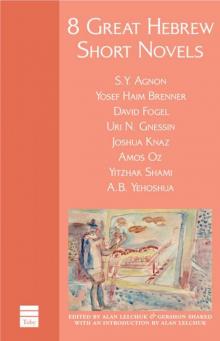 8 Great Hebrew Short Novels
8 Great Hebrew Short Novels This Is How You Die: Stories of the Inscrutable, Infallible, Inescapable Machine of Death
This Is How You Die: Stories of the Inscrutable, Infallible, Inescapable Machine of Death The Steampowered Globe
The Steampowered Globe While We Wait by J. M. Snyder
While We Wait by J. M. Snyder Iron Tongue cr-4
Iron Tongue cr-4![Stieg Larsson [Millennium 02] The Girl Who Played with Fire v5.0 (LIT) Read online](http://i1.bookreadfree.com/i1/03/31/stieg_larsson_millennium_02_the_girl_who_played_with_fire_v5_0_lit_preview.jpg) Stieg Larsson [Millennium 02] The Girl Who Played with Fire v5.0 (LIT)
Stieg Larsson [Millennium 02] The Girl Who Played with Fire v5.0 (LIT)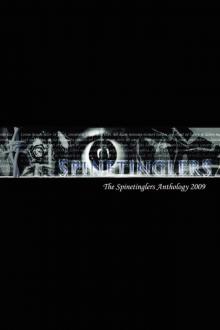 The Spinetinglers Anthology 2009
The Spinetinglers Anthology 2009 Bowles, Jan - Branded by the Texas Rancher (Siren Publishing Classic)
Bowles, Jan - Branded by the Texas Rancher (Siren Publishing Classic) Brown, Berengaria - Vivienne's Vacation (Siren Publishing Ménage and More)
Brown, Berengaria - Vivienne's Vacation (Siren Publishing Ménage and More) Inheritors
Inheritors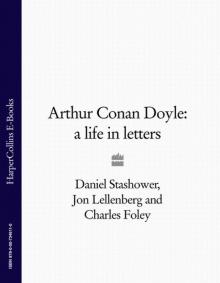 Arthur Conan Doyle: A Life in Letters
Arthur Conan Doyle: A Life in Letters Cunningham, Pat - Coyote Moon (BookStrand Publishing Romance)
Cunningham, Pat - Coyote Moon (BookStrand Publishing Romance) Static Line
Static Line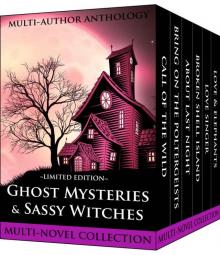 Ghost Mysteries & Sassy Witches (Cozy Mystery Multi-Novel Anthology)
Ghost Mysteries & Sassy Witches (Cozy Mystery Multi-Novel Anthology) Elizabeth Neff Walker - Puppy Love
Elizabeth Neff Walker - Puppy Love Ghosts in the Machine
Ghosts in the Machine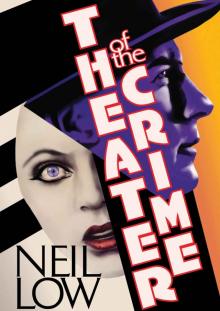 Theater of the Crime (Alan Stewart and Vera Deward Murder Mysteries Book 6)
Theater of the Crime (Alan Stewart and Vera Deward Murder Mysteries Book 6)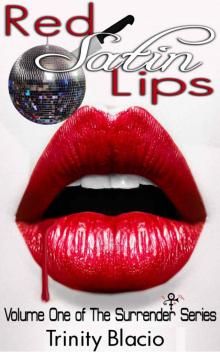 Red Satin Lips, Book One (The Surrender Series)
Red Satin Lips, Book One (The Surrender Series) Catherine Coulter - FBI 4 The Edge
Catherine Coulter - FBI 4 The Edge StateoftheUnion
StateoftheUnion Fantastic Women: 18 Tales of the Surreal and the Sublime from Tin House
Fantastic Women: 18 Tales of the Surreal and the Sublime from Tin House Sara Wood-Expectant Mistress original
Sara Wood-Expectant Mistress original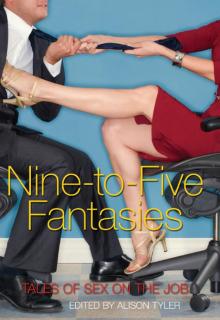 Nine-to-Five Fantasies: Tales of Sex on the Job
Nine-to-Five Fantasies: Tales of Sex on the Job Granta 133
Granta 133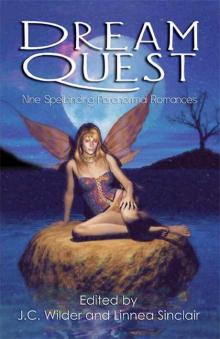 Dream Quest
Dream Quest The Warlock in Spite of Himself wisoh-2
The Warlock in Spite of Himself wisoh-2 Glenn, Stormy - Mating Heat (Siren Publishing Ménage Amour)
Glenn, Stormy - Mating Heat (Siren Publishing Ménage Amour) Davis, Lexie - Toys from Santa (Siren Publishing Classic)
Davis, Lexie - Toys from Santa (Siren Publishing Classic) Once Dead, Twice Shy
Once Dead, Twice Shy McSweeney's Enchanted Chamber of Astonishing Stories
McSweeney's Enchanted Chamber of Astonishing Stories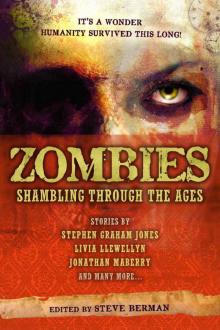 Zombies: Shambling Through the Ages
Zombies: Shambling Through the Ages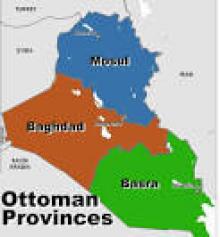 Baghdad Without a Map
Baghdad Without a Map Banshee Cries (the walker papers)
Banshee Cries (the walker papers)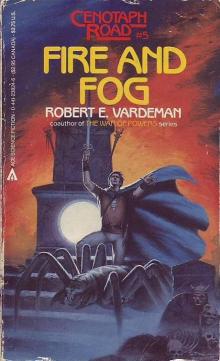 Fire and Fog cr-5
Fire and Fog cr-5 The Twelve Hot Days of Christmas
The Twelve Hot Days of Christmas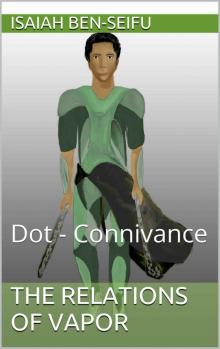 The Relations of Vapor: Dot - Connivance
The Relations of Vapor: Dot - Connivance![Harris, Daisy - Mere Temptation [Ocean Shifters 1] (Siren Publishing Classic) Read online](http://i1.bookreadfree.com/i2/04/11/harris_daisy_-_mere_temptation_ocean_shifters_1_siren_publishing_classic_preview.jpg) Harris, Daisy - Mere Temptation [Ocean Shifters 1] (Siren Publishing Classic)
Harris, Daisy - Mere Temptation [Ocean Shifters 1] (Siren Publishing Classic)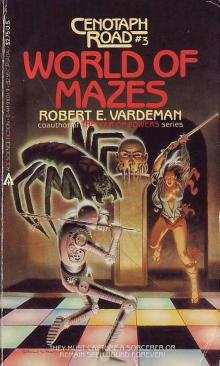 World of Mazes cr-3
World of Mazes cr-3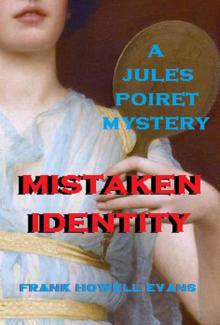 Mistaken Identity (A Jules Poiret Mystery Book 26)
Mistaken Identity (A Jules Poiret Mystery Book 26) Star Trek - DS9 - Fall of Terok Nor
Star Trek - DS9 - Fall of Terok Nor Not Like I'm Jealous or Anything: The Jealousy Book (Ruby Oliver)
Not Like I'm Jealous or Anything: The Jealousy Book (Ruby Oliver) Skaterboy by J. M. Snyder
Skaterboy by J. M. Snyder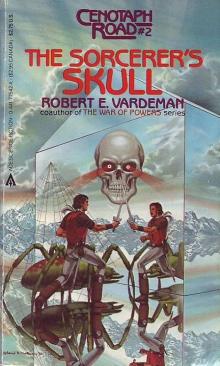 The Sorcerer_s Skull cr-2
The Sorcerer_s Skull cr-2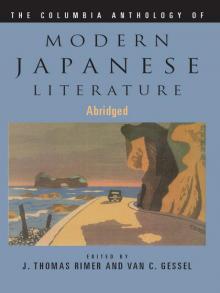 The Columbia Anthology of Modern Japanese Literature (Modern Asian Literature Series)
The Columbia Anthology of Modern Japanese Literature (Modern Asian Literature Series) New Erotica 5
New Erotica 5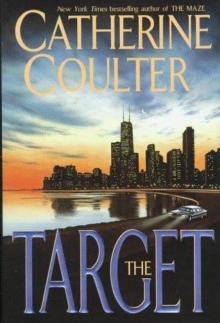 Catherine Coulter - FBI 3 The Target
Catherine Coulter - FBI 3 The Target Best Sex Writing 2013: The State of Today's Sexual Culture
Best Sex Writing 2013: The State of Today's Sexual Culture Factoring Humanity
Factoring Humanity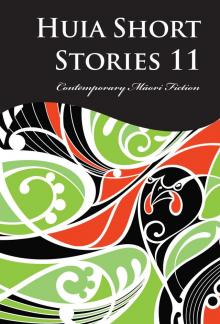 Huia Short Stories 11
Huia Short Stories 11 Call of the Wilds
Call of the Wilds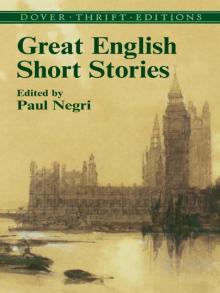 Great English Short Stories (Dover Thrift Editions)
Great English Short Stories (Dover Thrift Editions)![Ramagos, Tonya - Logan's Lessons [Sunset Cowboys 2] (Siren Publishing Classic) Read online](http://i1.bookreadfree.com/i2/04/10/ramagos_tonya_-_logans_lessons_sunset_cowboys_2_siren_publishing_classic_preview.jpg) Ramagos, Tonya - Logan's Lessons [Sunset Cowboys 2] (Siren Publishing Classic)
Ramagos, Tonya - Logan's Lessons [Sunset Cowboys 2] (Siren Publishing Classic)![Morgan, Nicole - Sweet Redemption [Sweet Awakenings 1] (Siren Publishing Allure) Read online](http://i1.bookreadfree.com/i2/04/10/morgan_nicole_-_sweet_redemption_sweet_awakenings_1_siren_publishing_allure_preview.jpg) Morgan, Nicole - Sweet Redemption [Sweet Awakenings 1] (Siren Publishing Allure)
Morgan, Nicole - Sweet Redemption [Sweet Awakenings 1] (Siren Publishing Allure) Warbirds of Mars: Stories of the Fight!
Warbirds of Mars: Stories of the Fight!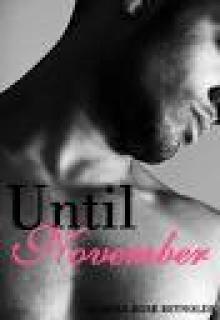 Original Version of Edited Godwin Stories(lit)
Original Version of Edited Godwin Stories(lit) Where The Hell is Boulevard?
Where The Hell is Boulevard?![Chemical [se]X Read online](http://i1.bookreadfree.com/i2/04/13/chemical_sex_preview.jpg) Chemical [se]X
Chemical [se]X Allison Brennan - See No Evil
Allison Brennan - See No Evil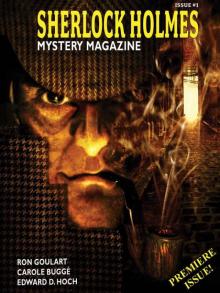 Sherlock Holmes Mystery Magazine #1
Sherlock Holmes Mystery Magazine #1